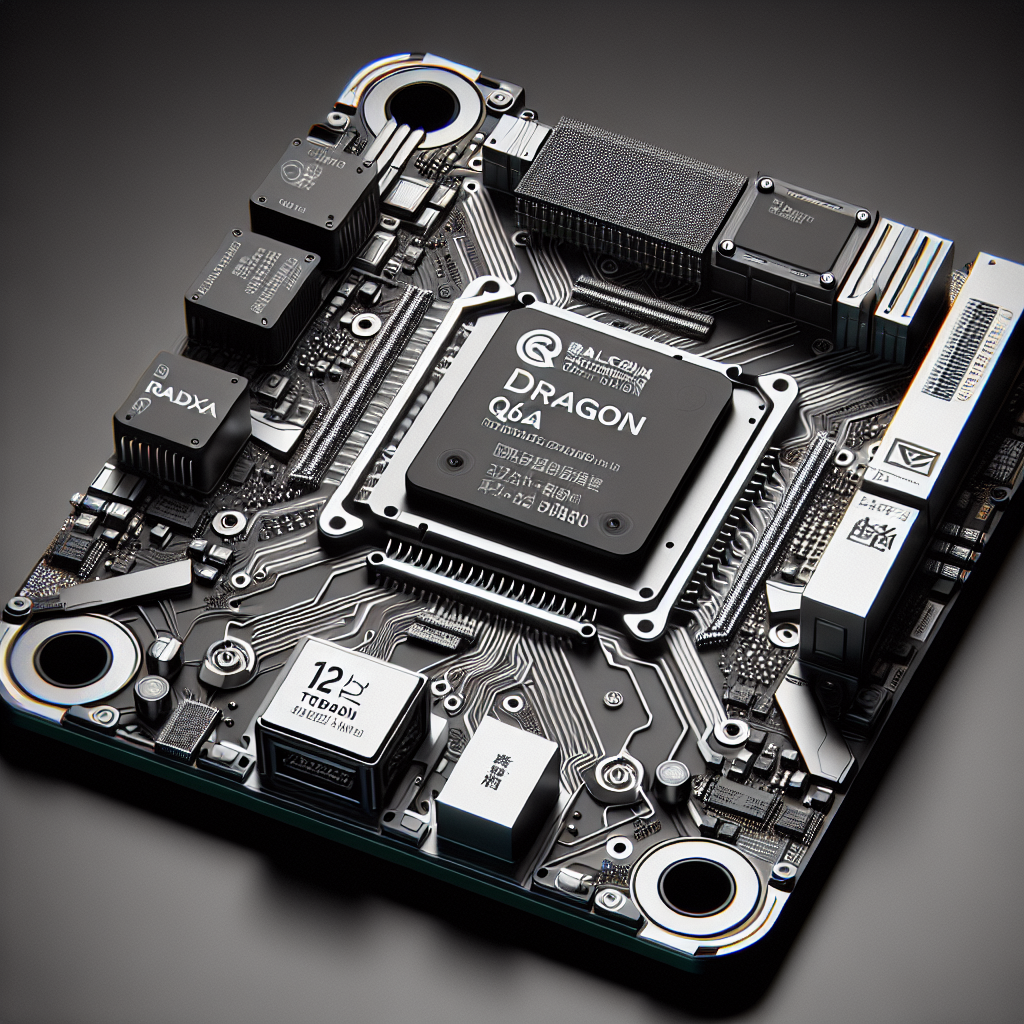
Radxa has recently unveiled its latest innovation, the Dragon Q6A, a compact yet robust single-board computer designed to meet the demands of industrial, IoT, and edge computing environments. This powerful board leverages Qualcomm’s QCS6490 octa-core platform, promising a blend of high performance and versatility.
At the heart of the Dragon Q6A is an impressive octa-core Kryo CPU configuration, consisting of one Prime core clocking in at 2.7 GHz, three Gold cores at 2.4 GHz, and four Silver cores at 1.9 GHz. Complementing this CPU powerhouse is the Adreno 643 GPU, which supports a range of graphics APIs including Vulkan 1.3, OpenCL 2.2, OpenGL ES 3.2, and DirectX 12, making it suitable for various demanding applications.
One of the standout features of the Dragon Q6A is its Qualcomm 6th-generation AI Engine, which is equipped with a Hexagon DSP, Tensor Accelerator, and Coprocessor 2.0. This configuration enables the board to deliver an impressive 12 TOPS (Tera Operations Per Second) of AI compute performance while maintaining low power consumption, showcasing Radxa’s commitment to energy-efficient solutions in the AI space.
The flexibility offered by the Dragon Q6A extends beyond processing capabilities. It provides a diverse array of storage and expansion options, including an M.2 M-Key socket for NVMe SSDs, a microSD slot, and connectors for UFS/eMMC storage. This wide range of options allows users to choose the configuration that best suits their needs, with LPDDR5 RAM options ranging from 4 GB to 16 GB, operating at speeds of up to 5500 MT/s. The standard 40-pin GPIO header enhances the board’s compatibility with various peripherals, supporting interfaces such as UART, I²C, SPI, PWM, and more.
In terms of connectivity, the Dragon Q6A is equipped with state-of-the-art features, including integrated Wi-Fi 6 and Bluetooth 5.4, provided through a Quectel FCU760K module. Gigabit Ethernet connectivity is also standard, with optional Power over Ethernet (PoE) support. This extensive connectivity ensures that the Dragon Q6A can be integrated into a myriad of networked environments, further broadening its applicability.
The display capabilities of the Dragon Q6A are equally impressive. It includes HDMI 2.0 support for 4K video output at 30 Hz, alongside a MIPI DSI interface and multiple camera connections via MIPI CSI. The ability to connect up to four cameras allows for advanced visual systems and applications, which are essential in industrial automation and smart IoT deployments.
Software support for the Dragon Q6A is robust, offering compatibility with Radxa OS, various flavors of Linux including Ubuntu, Armbian, Arch, and Fedora, as well as Windows 11 IoT Enterprise. Developers are encouraged to leverage Qualcomm’s AI Hub, which provides pre-optimized on-device models and hardware-control libraries, simplifying the process of implementing AI capabilities in applications. Additionally, Radxa has made available a wealth of documentation through its Wiki, helping users navigate through the setup and programming of the Dragon Q6A.
In conclusion, the Radxa Dragon Q6A emerges as a significant player in the realm of single-board computers, particularly for applications that demand high performance, AI capabilities, and flexible connectivity options. Its unique combination of features not only fulfills present technological requirements but also anticipates future trends in edge computing and IoT applications.

Leave a Reply